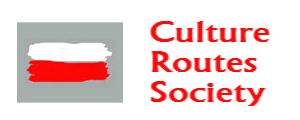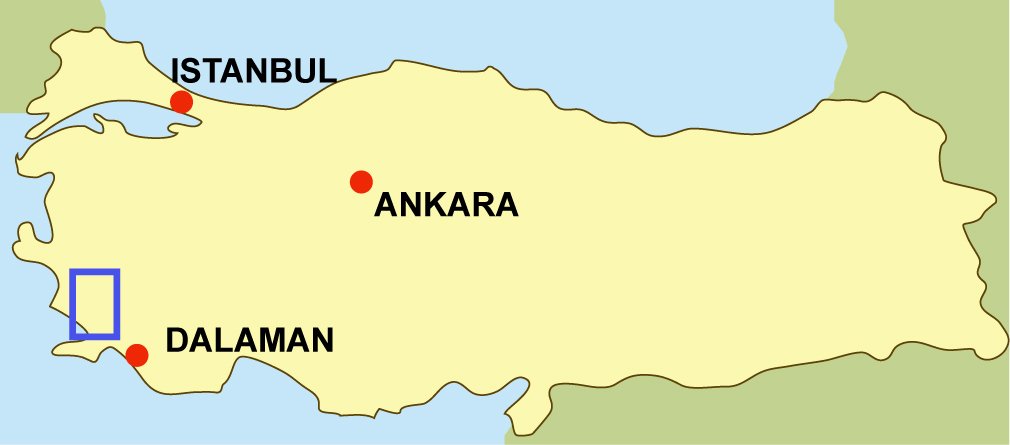Welcome to Idyma Way
This 10 day walks and 150 km. long route connects in some points with the Carian Way and circles through ruins and wild countryside. Based on shepherd trails or ancient roads, the route gives an insight into a traditional way of life on the coast.It also passes through the dramatic Ula canyon,where there is an historic paved road, believed to be 2500 years old. Walkers can base themselves in modern comfort in Akyaka and reach the most distant parts of the route by minibus or taxi. In future, village accommodation will be developed. The Guide Book of the Route will be published in 2014.
The History of Akyaka
For now, we know these lands have been inhabited for 2600 years. Idyma, where Akyaka is now, was established as a Carian city.
In the year 546 BC, Idyma was been occupied by the Persian army, under the command of Harpagos. From 484 – 405 BC, the Persian regiment has been banished and the city participated in the Attica Delos Sea Union lead by the Athens. In 440 BC Idyma quit the Union and Sparta’s leathership started in the region.
During the era of Mausolos (277 – 353 BC), the most important king of Caria, the region was under the control of the Persians. But Persia and Caria were on good terms so Mausolos was able to act as an independent king. In 334 BC, Alexander the Great occupied the region and the Hellenistic era started and Greek language and culture swiftly spread.
From the 1st century until the 3rd century, region was included in the Roman Empire. The 3rd century was the time when the Empire started to get weak. Also there were major earthquakes and long black death epidemics. After this century Idyma and its canals, castles, cisterns all have been abandoned like most of the other cities in the region.
It was resettled after the 13 century by the Turkish Sultanates. And in the year 1420 it joined to the Ottoman Empire.
Gökova Specially Protected Area (SPA) and Important Bird Area (IBA)
Gökova, where Akyaka is in, was declared as SPA in 1988. That was the first Specially Protected Area in Turkey. In this way, a chance has been created to protect the environment while developing and continuing the touristic facilities. Gökova is a special region. There are forest and scrub regions and also olive groves. The area where two rivers flow into the sea, has got rushy and swampy wetlands. With these various habitats the region is one of the most important areas in Turkey in terms of biological diversity. Especially with it’s internationally protected bird populations.
SPA’s don’t aim to stop the settlement or the business. The idea of the statute is to make sure that all the facilities caries on while protecting the environment and in the mean time to raise the public conscious of environment. In SPA’ s it’s thought to continue the human facilities in and with the nature with a conservative way.
Akyaka is an important spot for the birdwatchers. Particularly it’s wetland is a wintering and nesting place for the migratory birds. Because of the the internationally protected kinds it shelters Gokova’s been declared as an IBA. Therefore, Bird Atlas Project has been prepared for the Akyaka Basin. This project will provide information for the birdwatchers about the resident and migratory birds of the basin and their terms to visit and nest.
Style of Architecture
In the beginning of the 80’s Akyaka was a small district of Ula. Its “touristy town” look started to appear in the end of 80’s. Today, Akyaka has a population about 2500 and it’s consist of the region’s residents, nomads and the other citizens migrated to Akyaka from in or out of Turkey. This multiculturalism contributed Akyaka becoming an original place. In 1970, the important Turkish intellectual – journalist Nail Cakirhan settled in Akyaka with his wife, who also was also a very important Turkish archaeologist, Halet Cambel. Here in Akyaka, the Cakirhans built a house for themselves. It was an updated interpretation of the natural architecture style of the nomads and it started the genre which is called Akyaka Houses today.
Cakirhan lead an environment friendly architecture style with the one or two storeyed houses he built, using woodwork instead of concrete. In 1983 he received the world most respected award, the Aga Khan Architecture Award and he was the only person having this award in the world without a diploma in architecture. Later, he built several other houses, hotels and holiday villages in the region.
While traditional architecture styles have been left behind and concreted houses were occupying all our shorelines, Akyaka was also threatened with the same. But Cakirhan built beautiful houses in harmony with the nature with the help of the local workmen. Citizens also accepted this style and that helped to keep Akyaka away from the destructive effect of concretion.
Cittaslow; international network of the towns where quality of life is important
Life quality is a value which can be created collectively. The choices as breathing clean air, eating good and clean food, living in cooperation, looking after cultural and historical possessions can only be done by the citizens of a town, together with.
Akyaka showed the will to be a town where the quality of life is important. In April 2010, there was a referendum and the citizens of Akyaka replied the question “would you like to apply for the cittaslow membership?” %95 of the participators voted yes. At the same year Akyaka city hall applied for the membership and in 2011 membership was approved and Akyaka declared as a Cittaslow city. Akyaka is the only town in the world where application decision made by the public, not the city hall.
Cittaslow is a commitment, not an award. Certification means to agree to 59 concrete criteria and to promise to implement these criteria on behalf of raising the quality of life in the town.
Natural, economic, physical, social, cultural and humanitarian values seen the basic facts to determine the quality of life in Cittaslow Network. It’s been forseened to raise the quality in them all. None of these values are more important and worth to sacrifice the others for.

